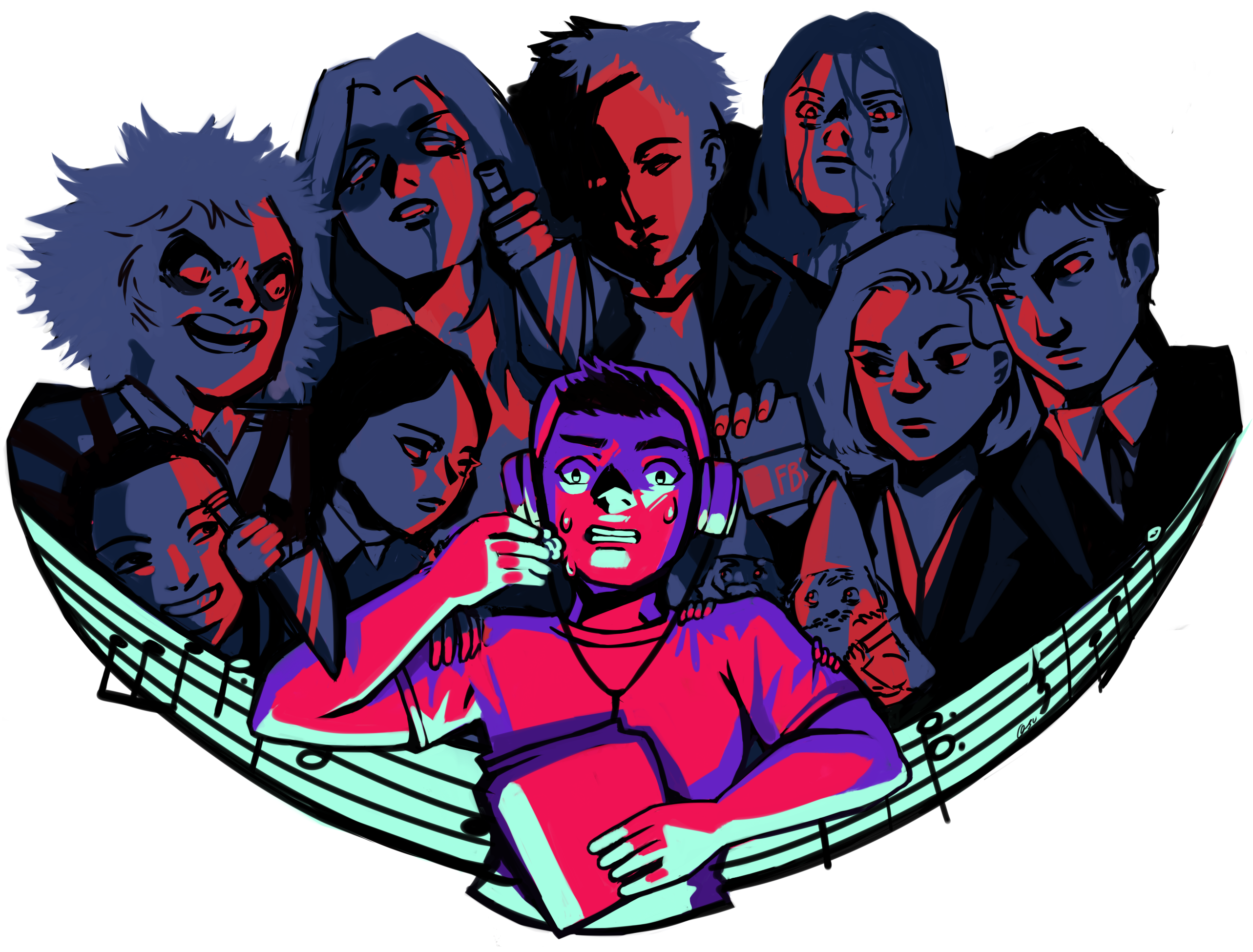Tempo of Terror: The essential role soundtracks play in horror films

(Qingqing Su/Daily Bruin)
By Ruhee Patel
Oct. 30, 2015 6:36 a.m.
A woman relaxes in the hot water of her shower. Suddenly, she is interrupted by the silhouette of a shadowy figure looming behind the curtain.
The figure raises a knife aloft and swings it down. The victim screams in pain as the violins in the background screech to a crescendo at the climax of the film “Psycho.”
From the strings in the iconic shower scene in “Psycho” to the piano melody of the main theme in “Halloween,” the soundtracks to horror films can claim at least partial credit for frightening moviegoers for years.
Fourth-year music student and short film composer Stephen Spies said the music in horror movies will either work with the editing to further accentuate what’s on the screen, or will offer more insight into character relationships and personalities beyond what is shown visually.
The 1982 film “Poltergeist” tells the story of a suburban family terrorized by ghosts in its new home, with the youngest daughter particularly drawn to the supernatural activities.
In the movie, Spies said the young girl’s theme is a slow-paced lullaby. There is also a romantic theme representing the bond between her and the ghost. Neither of the two melodic themes sound scary outside of the context of the film, he said, but instead bring out the psychological states of the characters.
“In general, with horror movies, you don’t get very melodic scores,” Spies said. “The main melodies of ‘Poltergeist’ are things that you would go away humming after the end credits.”
The soundtrack of the 1980 film “The Shining,” Spies said, is a compilation of previously composed concert pieces that shift from melodic to chaotic in sync with the storyline, perfectly accompanying Jack Nicholson’s character’s transformation from a rational father and husband to a broken-down man chasing his family with an axe.
Over the course of the film, Spies said the melodies become more deconstructed, playing sounds the audiences were not expected to hear.
One sound motif is when orchestra members hit the strings with the sides of their bows, which Spies said creates an unsettling percussive effect. While the musicians were given the notes to play, Spies said they were not instructed on when they should all play together, resulting in everyone playing the notes at different times.
“It’s a very scattered sound – the orchestra is becoming less and less together throughout the soundtrack,” Spies said.
Rob Racke, a third-year communication studies student and a fan of horror movies, also said “The Shining” was one of his favorite soundtracks because of the orchestral nature of the music.
The movie’s ability to thrill, Racke said, comes from focusing on things that become more horrifying as time passes while being accompanied with frantic, dramatic music.
“There’s this one scene where Jack Nicholson sees a sexy woman turn into an old ghoul,” Racke said. “As you stare at this monster, the music just rises and rises.”
While Spies prefers music that adds more to the film’s characters and Racke enjoys more orchestral music, fifth-year musicology doctoral student Morgan Woolsey focuses more on music that really works with the images presented on screen.
Woolsey, who is currently writing her dissertation on the use of music in 1970s horror films, said her favorite horror soundtracks come from “Suspiria” and “Psycho.”
The contrast between the visuals and the progressive rock music in the 1977 film “Suspiria” creates a sense of disconnect and emotional distance that leaves viewers feeling unsettled, Woolsey said.
“(The movie) takes place in a dance academy, but the music has a lot of electric guitar and almost a heavy metal feel,” Woolsey said.
Woolsey said the soundtrack for the 1960 film “Psycho” uses only string instruments, which creates an eerie, empty feeling and reflects the film’s black and white images.
“There are these little chunks of music and so it doesn’t really have a sense of direction,” Woolsey said. “You’re not sure where it’s going to go next.”
In particular, Woolsey said the shower scene is famous because the visual and musical elements compliment each other: The screeching sounds of the violin reflect the stabbing motion seen on screen.
Audiences, Woolsey said, tend to notice the soundtracks less than the narrative and visual elements of horror movies, except in the most startling moments.
“If it’s really doing its job, (the soundtrack) should blend imperceptibly with the other elements of the film, and then it kind of jumps out in the moments that are really scary,” Woolsey said. “That alternation between being something in the background and kind of popping out helps people really remember the scary moments.”


